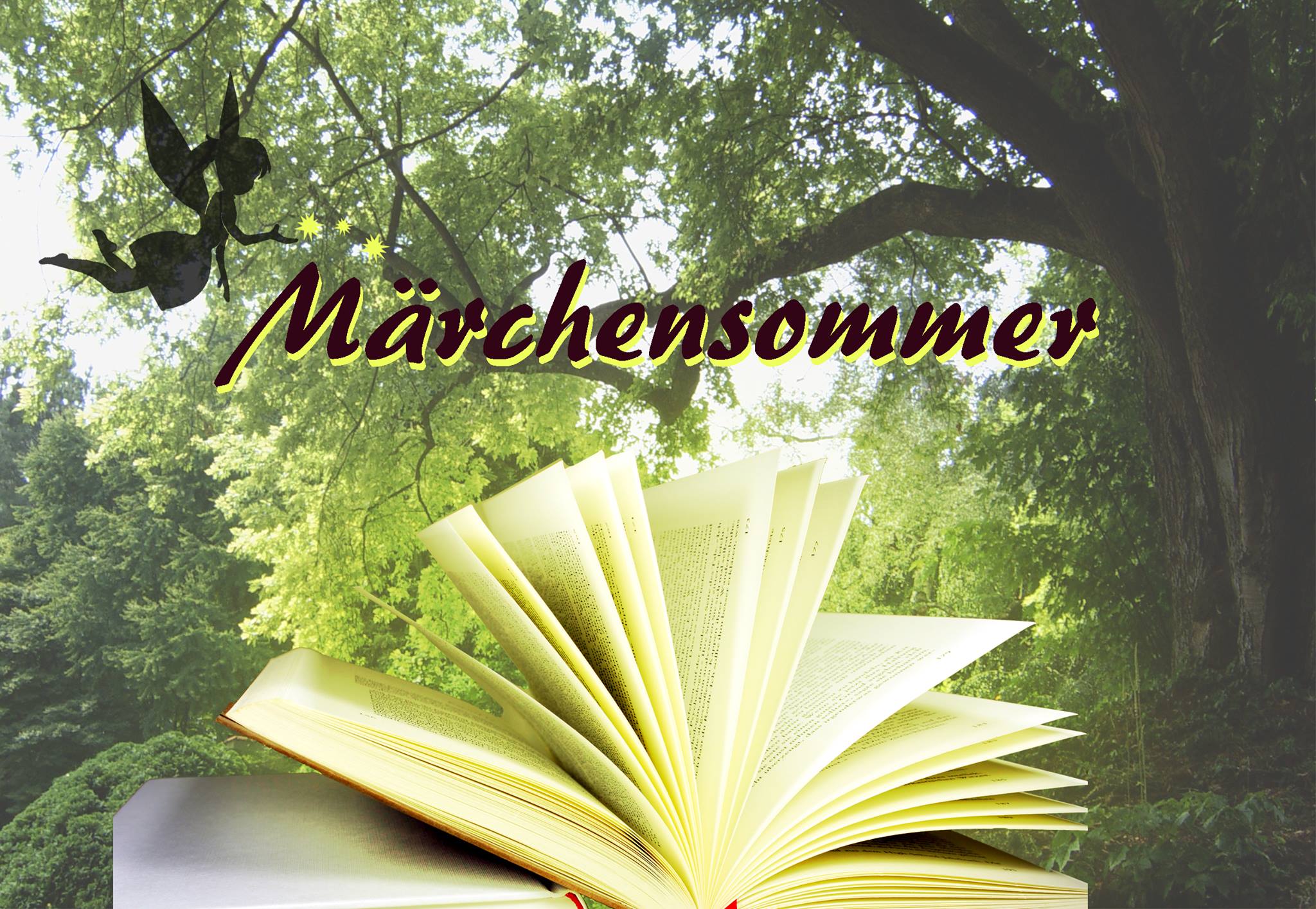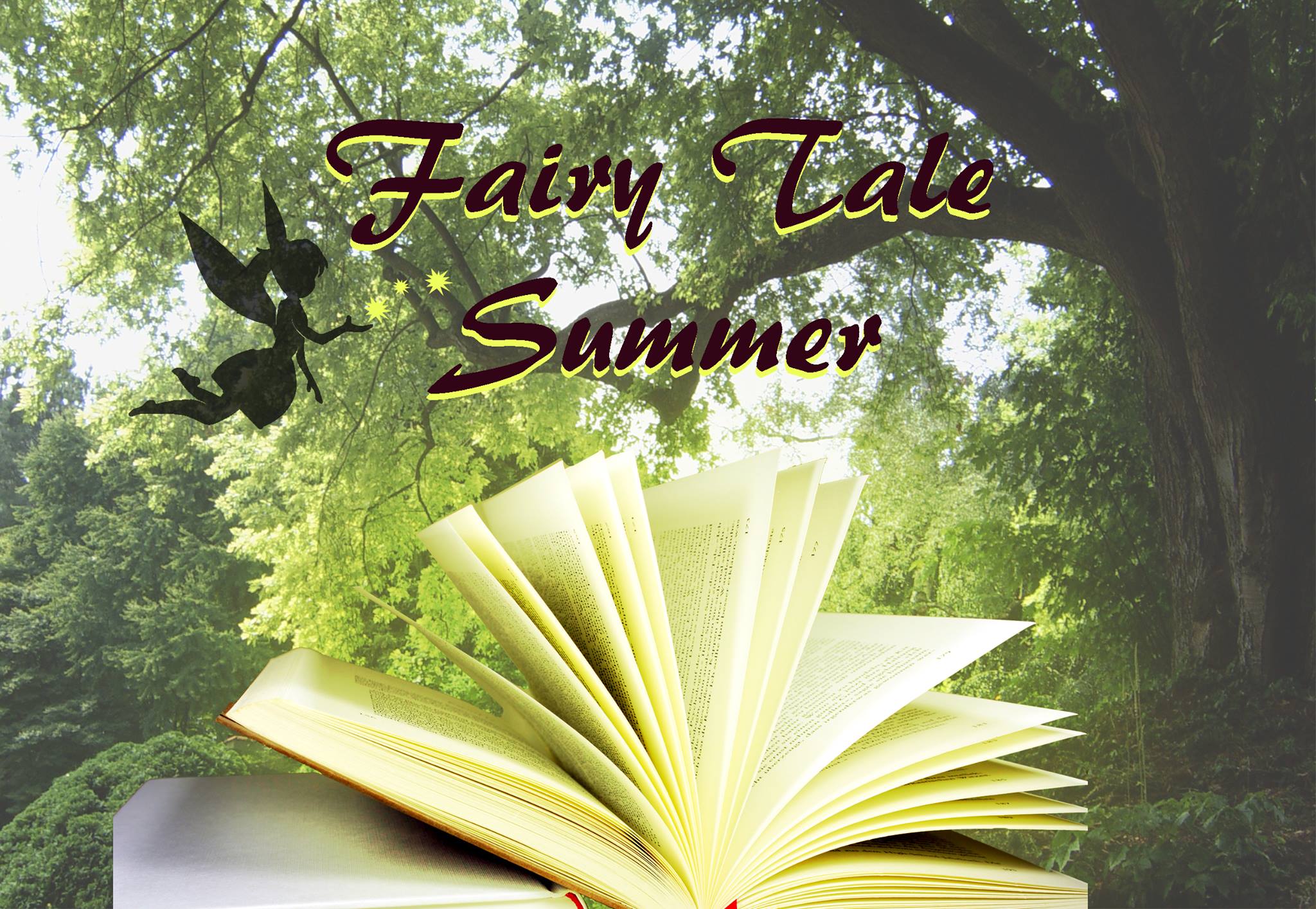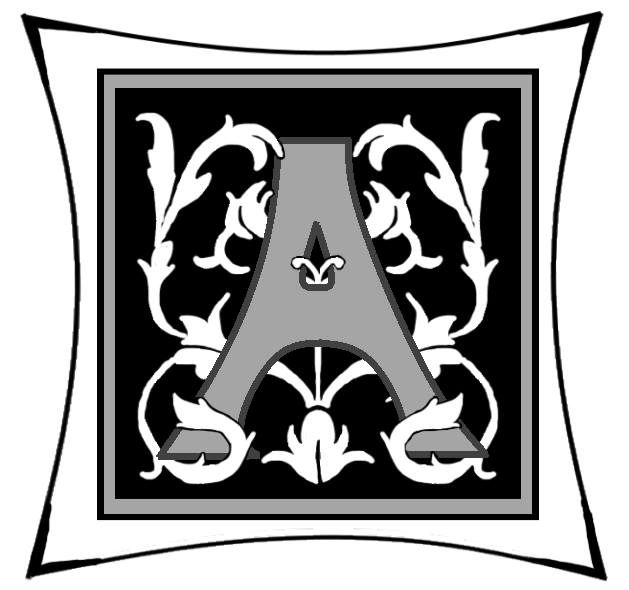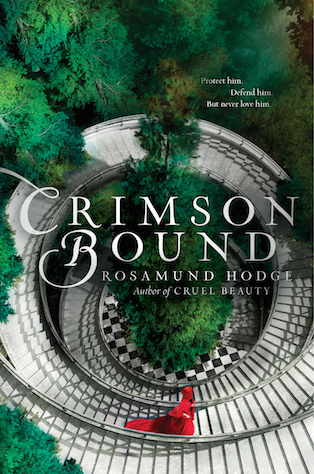Read in English
[Edit]Hinweis: Janna hat diesen Beitrag nochmal für ihren eigenen Blog aufgearbeitet.
Ihr findet es hier: Die fünf Arten einer Märchenadaption and Adaption eines Märchens anhand Im Bann der zertanzten Schuhe[/Edit]
Im Rahmen des Märchensommers erzählt Janna Ruth in einem Gastbeitrag auf welche Arten man ein Märchen adaptieren kann und wie sie es bei ihren zertanzten Schuhen angestellt hat. Oder in anderen Worten erzählt sie
Wie man ein Märchen adaptiert
Zuerst nehme man etwas Froschlaich, ein Kännchen Sternblumensaft bei Mondschein gepresst, eine Handvoll zerbröselten Lebkuchen, eine Dosis Realität und einen großen Schuss Magie. Gut durchmischen und ihr erhaltet ein Fässchen magischer Tinte. Mit einer Rabenfeder lassen sich nun zauberhafte Märchenadaptionen schreiben.
Oh, ihr seid gar keine Schreibhexen? Na gut, dann müssen wir uns der Angelegenheit wohl anders nähern.
Die fünf Arten der Märchenadaption
In der Märchenspinnerei haben wir uns darauf geeinigt, überwiegend moderne Adaptionen von altbekannten Märchen zu spinnen. Grob lassen sich Märchenadaptionen also schon mal einteilen in solche, die in einer märchenhaften Welt bleiben wie Fallen Queen von Ana Woods or Das Reich der sieben Höfe von Sarah J. Maas, und solche, die in der Realität verankert sind, sei das die Moderne, ein anderer Kulturkreis oder auch eine historische Epoche. Darüber hinaus gibt es aber noch fünf weitere Ansätze, die ich euch heute vorstellen möchte.
1. Die Neuerzählung
Märchen sind oft ziemlich kurz. Die Figuren bleiben flach und lassen sich mit wenigen Worten charakterisieren: die kluge Bauerntochter, die dumme Else, das tapfere Schneiderlein. Der Plot kommt ohne Ausschmückungen zurecht. Für magische Interventionen gibt es keine Erklärung und die Logik sucht man oft sogar vergeblich. Wo kommt zum Beispiel das kleine Häuschen her, das Brüderchen und Schwesterchen beziehen und das nie jemand aufsucht?
Märchenfiguren machen einfach, was sie wollen und wann sie es wollen. Für kurze Gute-Nacht Geschichten oder wenn man früher vor einem Geschichtenerzähler zusammenkam sind die Märchen gut geeignet. Heutzutage wollen wir aber oft mehr von einem Märchen. Wir wollen die Hintergründe, große Gefühle und packende Actionszenen und genau da setzen die Neuerzählungen von Märchen an.
Sie machen aus dem bekannten Märchenstoff einen vollwertigen Roman, geben den Figuren Namen und vor allem auch Motivationen und schmücken den Plot aus. Dabei bleiben sie den einzelnen Elementen des Märchens und den Beziehungen der Figuren überwiegend treu. Oft wird aber die Welt noch ausgeschmückt: Es gibt regionale politische Beziehungen, neue Plotelemente und einen eindrücklicheren Blick auf die Gesellschaft. Der bekannteste Vertreter dieser Art Neuerzählung ist übrigens Hans Christian Andersen (vergleiche „die wilden Schwäne“ mit „die sechs Schwäne“ der Brüder Grimm).
Beispiele: The Wild Swans (Jackie Morris), Beauty: A Retelling of the Story of Beauty and the Beast (Robin McKinley), Fallen Princess (Veronika Mauel)
2. Eine andere Perspektive
Wir kennen die Märchen aus der Perspektive der Helden: Die armen Kinder, die in die Fänge einer bösen Hexe geraten, oder das mutterlose Mädchen, das mit seinem guten Herzen und viel Fleiß sich selbst aus seiner Situation befreit, oder auch den gutmütigen Jüngling, der in die Welt hinauszieht und sein großes Glück macht. Aber was ist mit der Hexe, deren Haus mutwillig zerstört wird und die verdammt gute Lebkuchen bäckt? Oder was denkt sich der Prinz eigentlich, der sich eine Leiche im Glassarg ins Schloss stellen will?
Genau damit beschäftigen sich die Märchenadaptionen dieser Art. Sie erzählen die Geschichte neu aus der Sicht des Bösewichts, des Love Interests oder auch völlig unbeteiligten Nebencharakteren und entdecken dabei faszinierende Facetten an den eigentlichen Akteuren, die das Originalmärchen nicht hergibt. Manche schreiben das Märchen dabei komplett um, andere folgen dem altbekannten Pfad und verleihen den Personen Tiefe, die im Märchen nicht mehr als eine Rolle sind.
Beispiele: The Six Swans (Annabeth Leong) – aus der Sicht des Königs, The Sleeping Maid in „Beyond the Briar“ (Shelley Chappell) – aus der Sicht der Dorfbewohner, die durch Dornröschens Fluch von ihren Liebsten getrennt wurden, Confession of an Ugly Stepsister (Gregory Maguiere) – aus der Sicht der bösen Stiefschwester
3. Das Experiment
Oft genug liest man ein Märchen und denkt sich, was wäre eigentlich passiert, wenn die Prinzessin gar nicht auf ihre Rettung gewartet hätte, sondern sich selbst befreit hätte? Oder funktioniert Rapunzel eigentlich auch, wenn in dem Turm ein junger Mann mit langem Haar sitzt? Was wäre, wenn Aschenputtel in Wirklichkeit ein Cyborg wäre?
Mit solchen Gedankenexperimenten beginnen oft ganz andere Märchenadaptionen, die den Märchenstoff nehmen und in völlig neuer Form wiedergeben. Gerade die Genderbender Variationen sind sehr beliebt. Aber auch Versionen, in denen die üblichen Helden mehr sind als fleißige, gutherzige Abziehbilder und zum Beispiel einer ungewöhnlicher Arbeit nachgehen, fallen in diese Kategorie
Beispiele: The Lunar Chronicles (Marissa Meyer), Aschenkindel (Halo Summers), die restlichen Geschichten von Beyond the Briar (Shelley Chappell), Thorn (Intisar Khanani)
4. Inspiration Märchen
Häufig sind es ganz bestimmte Elemente, die uns an Märchen faszinieren, z.B. weil sie zeitlos sind, weil sie eine Botschaft in sich tragen, die uns nachhaltig beeindruckt hat oder weil sie einen unglaublich coolen Twist haben. Die Geschichte von der Schönen, die sich in das unansehnliche Biest verliebt, hat alleine bestimmt tausend verschiedene Adaptionen ins Leben gerufen. Auch Aschenputtel, die Urgestalt des fleißigen Mädchens, das am Ende belohnt wird, ist in unzähligen Geschichten erneut aufgetaucht und nicht immer sind diese noch als Märchenadaptionen erkennbar.
Die Geschichten haben oft nur noch wenig mit dem Rest des Märchens zu tun. Der Film Beastly zum Beispiel hat außer der Grundidee und der Deadline recht wenig mit dem Original zu tun, was nicht nur am Setting liegt. Schließlich geht es in dem Film mehr um die Charakterentwicklung des Biests, als um das Mädchen, was das Biest lieben lernen muss. Ein ganz anderer Fokus eben. Manchmal nimmt diese Adaption aber auch nur einen Aspekt des Märchens (einen Namen, eine Figurenkonstellation, eine Botschaft) und entwickelt diese zu etwas ganz eigenem. Auf jeden Fall kommen dabei interessante Geschichten heraus, die uns immer ein wenig an das geliebte Originalmärchen erinnern.
Beispiele: Straßensymphonie (Alexandra Fuchs), Rosen und Knochen (Christian Handel), Rotkäppchen und der Hipsterwolf (Nina MacKay), Alice in Zombieland (Gena Showalter)
5. Die Neuinterpretation
Schlussendlich gibt es noch die sogenannte Neuinterpretation. Dabei wird das Originalmärchen als grober Leitfaden genommen und möglichst viele der Elemente umgesetzt, allerdings in einem gänzlich anderen Setting. Da wären also unsere modernen Märchen aus der Märchenspinnerei oder ähnliche Umsetzungen. Aber auch Märchen, deren Inhalte ins alte Rom oder mit einem Mal nach Japan versetzt wurden, fallen in diese Kategorie. Dabei müssen nicht unbedingt alle Elemente des Originals umgesetzt werden. Auch der Plot muss nicht dem altbekannten Pfad folgen, schließlich will man ja überrascht werden, aber das Märchen sollte schon gut erkennbar sein.
Beispiele: Hollerbrunn (Tina Skupin,), Meerschaum (Anna Holub), Briar Rose (Jane Yolen), Kindsräuber (Nora Bendzko)
Natürlich lassen sich diese Typen auch beliebig untereinander mischen. Aber egal, ob Neuerzählung oder lustiges Experiment, im Großen und Ganzen lässt sich jede einzelne Adaption auf die elementare Frage „Was wäre, wenn …?“ runterbrechen.
Ich selbst habe mich wie alle Märchenspinner bei „Im Bann der zertanzten Schuhe“ für die Neuinterpretation entschieden. Dabei liebe ich es geradezu, so viele Märchenelemente wie möglich zu verwenden. Manche von ihnen spielen keine große Rolle, andere sind auch der Interpretation zum Opfer gefallen, aber am Ende ist das Original „die zertanzten Schuhe“ noch gut erkennbar und auch der Plot folgt relativ strikt den Ereignissen der Vorlage. Dennoch bewegt sich der Plot in einem ganz anderen Kleid und ist mehr das Skelett der Geschichte, während sich das eigentliche Geschehen einen ganz eigenen Weg sucht.
Was wäre, wenn …?
Wie auch die meisten anderen Adaptionen fing meine Geschichte mit dieser alles entscheidenden Frage an. Bei mir drehte sich die Frage um die zwölf verfluchten Prinzen, welche im Originalmärchen nicht erlöst werden. Scheinbar hat das auch niemanden gestört, in meiner Adaption wollte ich aber genau darauf den Fokus legen. Ohne zu viel vorwegzunehmen, lautet meine „Was wäre, wenn …?“ Frage wie folgt:
Was wäre, wenn es einen bestimmten Grund gäbe, aus dem die Prinzen nicht erlöst werden dürfen?
Elemente, die ihren Weg ins Buch gefunden haben.
Von dieser Frage ausgehend, habe ich mir Gedanken darum gemacht, den Rest des Märchens zu adaptieren. Zuallererst war da natürlich die Figurenkonstellation, denn meine Geschichten stehen und fallen mit ihren Figuren.
Die zwölf Prinzessinnen werden von Sophie und eigentlich auch ihren Freundinnen verkörpert. Tatsächlich sind letztere jedoch immer wieder der Schere zum Opfer gefallen, so dass sie nun nur noch vage erwähnt werden. Sophie hingegen liebt natürlich das nächtliche Tanzen und weil ich bei zertanzten Schuhen immer an Ballettschuhe denken muss, wurde aus Sophie eine Balletttänzerin. Auch den Prinzessinnenhintergrund gibt es in der Geschichte. Nicht nur, dass Sophie Papas kleine Prinzessin ist, ihr Vater ist auch noch ungeheuer reich. So reich, dass er einen Haufen Privatdetektive anheuern kann, um das Rätsel seiner nächtlich verschwindenden Tochter zu lösen.
Und das bringt uns zu Jonas, dem ehemaligen Soldaten. Das Märchen sagt, dass der Soldat eine Wunde gehabt hat, die seine militärische Karriere beendet hat. Auch nimmt er die tödliche Aufgabe des Rätsellösens an. Schließlich hat er ja eh nichts mehr zu verlieren, sprich keine Zukunftsaussichten. Genau wie der Soldat im Märchen, hat auch Jonas eine kampfunfähig machende Verwundung erlitten, allerdings eine seelische. Er leidet unter einer posttraumatischen Belastungsstörung, die es für ihn schwer macht, wieder zurück ins Leben zu finden.
Die zwölf Prinzen wurden genauso übernommen, wie sie im Märchen sind. Elegante Tänzer, die verflucht wurden und mysteriös bleiben. Außer dem Wunsch, von ihrem Fluch erlöst zu werden, scheint sie nichts zu motivieren, doch verbirgt sich hier eben der Kern der Ausgangsfrage.
Die alte Frau, die dem Soldaten ihren Unsichtbarkeitsmantel schenkt, wurde in der Adaption durch einen alten Bettler ersetzt. Was auf den ersten Blick wie eine merkwürdige Abweichung aussieht, hat einen überraschenden Sinn, den ich hier natürlich nicht verraten möchte. Der Unsichtbarkeitsmantel hat jedenfalls auch seinen Weg in die Adaption gefunden.
Die wohl wichtigste Adaption ist die des unterirdischen Märchenreichs, in das die Prinzessinnen jede Nacht hinabsteigen. In „Im Bann der zertanzten Schuhe“ geht es stattdessen in einen Nachtclub. Darin sieht es aber genauso aus wie im Märchen: Gold- und Silberbäum, ein See mit Booten und sogar ein Schloss am anderen Ufer. Während Sophie jede Nacht zu ihrem Prinzen tanzen geht, betritt Jonas das DeModie nur dreimal im Verlauf der Geschichte. Jedes Mal bricht er dem Märchen gemäß einen verzauberten Zweig ab und wie im Märchen ertönt darauf hin auch ein lauter Donner. Und auch Sophie fragt jedesmal erschrocken ihren Prinzen, was das zu bedeuten hat.
Übrigens habe ich auch noch andere Märchen in der Geschichte versteckt. So ist Jonas‘ und Sophies erste Begegnung Aschenputtel entsprungen, Lucas Fluchgeschichte ist an die Schöne und das Biest angelehnt und am Ende gibt es ein ähnlich dramatisches Aufstampfen wie bei Rumpelstilzchen.
Elemente, die der Adaption fehlen
Von den anderen elf Prinzessinnen abgesehen, ist das auffälligste Element, was fehlt, der Schlaftrunk, den die Prinzessinnen den armen Jungs verabreichen, die versuchen, ihnen nachts zu folgen. Da es einfach partout nicht funktioniert hat, einerseits logisch zu erklären, warum Jonas sich jede Nacht von Sophie etwas zu trinken reichen lässt, und andererseits nicht mit Sophies Charakter vereinbaren ließ, dass sie ihren Mitbewohner monatelang unter Drogen setzt, wurde dieser Aspekt des Märchens nicht umgesetzt.
Schließlich umfasst die Geschichte ja auch ungefähr acht Monate statt drei Tagen. Nach der Zeit hätte Jonas noch ein ganz anderes Problem als sein Kriegstrauma gehabt. Die Zeit ist also ein anderes Element, das ich geändert habe. Ganz ehrlich, in drei Tagen hätte sich keine der Figuren entwickeln können, niemand hätte seine Probleme überwunden und Sophie und Jonas hätten sich sicher nicht ineinander verliebt. Die Geschichte musste also einen längeren Zeitraum einnehmen.
Jetzt fehlen noch zwei Kleinigkeiten, die Jonas nicht aus dem DeModie mitnimmt. Das eine ist ein Diamantzweig, die passten einfach nichts in das Bild in meinem Kopf, das andere ist ein Kelch aus dem wunderbaren Reich, um die Geschichte zu beweisen. So eindrucksvoll der Märchenkelch sicher war, glaube ich, dass irgendein schickes Glas niemanden von übernatürlichen Vorgängen überzeugen würde. Zumal der Fokus der Adaption auch nicht auf der Enthüllung des Rätsels für den Vater liegt. Tatsächlich erfährt dieser im Buch recht schnell, wo seine Tochter hingeht, aber nicht, was an dem DeModie so besonders ist. Mein Finale sollte aber auch deutlich spannender sein, als eine Beweismittelübergabe und die folgende Belohnung. Zumal ja nichts und niemand die Prinzessinnen eigentlich hindern würde, weiterhin nachts hinabzusteigen. Vielleicht wurden sie ja aus ihrem Zimmer verbannt.
Wie ihr seht, habe ich ziemlich viele Elemente des Originalmärchens umgesetzt und neu verwoben, ganz im Sinne unseres Märchenspinnerleitspruchs:
Alte Märchen im neuen Gewand.
Die Gastautorin:
Janna Ruth ist Autorin für alle Spielarten der Fantasy und Jugendbücher. 1986 in Berlin geboren, hat sich Janna schnell von den fantastischen Welten der Märchen angezogen gefühlt. Bereits in jungen Jahren erfand sie dabei eigene Geschichten, die sie anfangs noch malte. Die Liebe zum Comic und später Manga legte schließlich den Grundstein für ihre folgenden Romane.
Homepage: Janna Ruth
Facebook: Janna Ruth
Twitter: Janna Ruth
Mein Interview mit Janna: Märchenspinnerei im Interview: Janna Ruth
Schon im Märchenwald gewesen? Versucht euch im Rahmen der, von Janna organisierten, Märchenrallye durch die 42 Fragen bis zum Ziel durchzuraten und gewinnt tolle Preise: Märchenrallye.
(Noch mehr tolle Preise gibt es natürlich auch beim Fairy Tale Summer 😉 )
PoiSonPaiNter
_________________________________
Lies auf Deutsch
Adapting a fairy tale
As part of the Fairy Tale Summer Janna Ruth talks about different ways to adapt a Fairy Tale and demonstrates it with her worn-out dancing shoes. Or in other words shes talking about
Adapting a Fairy Tale
Take some frog spawn, a cup of star flower juice pressed in moonlight, a handful of crumbled gingerbread a dose of reality and big shot of magic. Mix it well and you will get a bottle of magic ink. Using a raven feather, you can now write fantastical Fairy Tale adaptations.
Oh, so you aren’t really writing witches? All right, then we need to approach this differently.
Five types of Fairy Tale adaptations
In the Märchenspinnerei, we have mostly chosen to produce modern Fairy Tale adaptations. You can roughly divide Fairy Tale adaptations into those taking place in a magical world like Fallen Queen by Ana Woods or A Court of Thorns and Roses by Sarah J. Maas and those anchored in reality may that be the modern world, another culture or a historical epoch. Beyond that there are five more approaches that I want to introduce to you.
1. The retelling
Fairy Tales are often short. The characters remain one-dimensional and can be characterised by only a few words: the clever farmer’s daughter, the lazy spinner, the brave little tailor. The plot is told plain and simple. There is no explanation for magical interventions and logic will often be sorely missed. For example, where does the little house come from the little brother and little sister find in the forest and that nobody ever visits?
Characters of Fairy Tales do what they want and when they want it. For short good night story back when you came together at the feet of the storyteller that’s all right. But today we want more of a story. We want character background, big feelings, and exciting action scenes. This is exactly the spot where retellings begin.
They turn a short Fairy Tale into a proper novel, provide names of identity to the characters and pretty up the plot. By doing so, they stay true to the original Fairy Tale and leave the relationships between the characters intact. There is often a huge amount of world building though: there‘s geopolitics, new plot elements, and a closer look at the society. The most famous author to do so is Hans Christian Andersen, by the way (compare “the wild Swans” with “the six Swans” by the Brothers Grimm and many more)
Examples: The Wild Swans (Jackie Morris), Beauty: A Retelling of the Story of Beauty and the Beast (Robin McKinley), Fallen Princess (Veronika Mauel)
2. Another perspective
We know Fairy Tales from the hero’s perspective: the poor children that got caught by an evil witch, or the motherless girl that makes a life for herself by being industrious and of good heart, either good natured youth that goes out in the world and gets lucky. But what happens to the witch whose house is vandalised and who bakes damn good gingerbread? Or what is the prince thinking, taking home a corpse in a Glass Coffin?
These are exactly the kind of questions these Fairy Tale adaptations deal with. They retell the Fairy Tale from the perspective of the villain, the love interest, or the usual bystander. By doing so they unearth interesting facets of the main characters that aren’t shown in the original Fairy Tale. Some rewrite the story completely. Others stay on well-known path and give depth to people that remain one-dimensional in the original.
Examples: The Six Swans (Annabeth Leong) – told by the king, The Sleeping Maid in „Beyond the Briar“ (Shelley Chappell) – told by a villager that has been separated from his true life by Briar Rose’s curse, Confession of an Ugly Stepsister (Gregory Maguiere) – told by the evil stepsister.
3. The experiment
Often enough you read a Fairy Tale and think about what would have happened if the princess hadn’t waited for her rescue but instead saved herself. Or is Rapunzel still working as a story if there is a young man with long hair sitting in the tower? Or what if Cinderella is actually a cyborg?
Many Fairy Tale adaptations start off with such thought experiments. They take the old material and rework it completely. For example, gender bender stories are very popular. Other likely takes are those that expand on the plain main character and give them some bizarre hobby or job.
Examples: The Lunar Chronicles (Marissa Meyer), Aschenkindel (Halo Summers), the other stories of Beyond the Briar (Shelley Chappell), Thorn (Intisar Khanani)
4. Inspired by
Many times it’s a particular element that fascinates us about a Fairy Tale. Maybe that it is timeless, that it still carries the relevant message, or that it has a really cool twist. The story of Beauty who falls in love with the ugly Beast alone has spawned a thousand different adaptations. Cinderella as well – the original industrious girl that gets rewarded in the end – appears in countless stories. Not always are those stories recognisable as Fairy Tale adaptations.
Those stories usually don‘t have much in common with the original Fairy Tale. The movie Beastly has nothing to do with the original beyond the basic idea and the deadline. That movie, for example, is more focused on the character development of the Beast than showing a girl learning how to love the Beast. A completely different story.Sometimes adaptation only picks up one element (a name, a relationship, a message) and develop something of its own. In any case, this makes for an exciting new story that sets off from the original tale.
Examples: Straßensymphonie (Alexandra Fuchs), Rosen und Knochen (Christian Handel), Rotkäppchen und der Hipsterwolf (Nina MacKay), Alice in Zombieland (Gena Showalter)
5. New interpretation
Finally, there is the so-called new interpretation. In this case, the original Fairy Tale is used as a guideline. Those stories adapt as many elements as possible but present them in a completely different setting. This would be where our modern Fairy Tales from the Märchenspinnerei or similar adaptations fit in. It also contains those tales that move their story into Ancient Rome I take them to Japan. It isn’t necessary to adapt all elements of the original Fairy Tale or stay true to the plot, but the original Fairy Tale should shine through.
Examples: Hollerbrunn (Tina Skupin,), Meerschaum (Anna Holub), Briar Rose (Jane Yolen), Kindsräuber (Nora Bendzko)
Of course, you can mix all of these types. And no matter whether you are writing a retelling or working on an experiment, with each adaptation it comes down to the basic question: What if?
Adapting The worn-out Dancing Shoes
Like all Märchenspinner, I chose the “new interpretation” type of adaptation, when I started to write “Under the Spell of the worn-out Dancing Shoes”. Personally, I love to adapt as many elements of the original tale as possible. Some of them are barely mentioned there are those that didn’t fit in the interpretation, but in the end, the original “The worn-out Dancing Shoes” is well recognisable and the plot day is pretty true to the original one. Still, it is completely different and the Fairy Tale provides the mere skeleton for the actual story.
What if?
Like most adaptations, my story began this all deciding question. In my case, the question revolved around the twelve cursed princes which remain cursed in the original. Apparently, nobody cared though. My adaptation focuses on that. Without spoiling you my what-if question would be:
What if there was a particular reason for the princes to remain cursed?
Adapted plot points
After defining my what-if question, I looked at the rest of the Fairy Tale. At first, there where the relationships between the characters because all my stories are based on characters and their development.
The twelve princesses turned into Sophie and her girlfriends. Actually, the latter ones got cut in the editing process, so, now they’re only referred to. Sophie lasted good dancing every night and because, when I think about the worn out dancing shoes, I immediately think ballet, she became a ballet dancer. I even managed to incorporate her princess background not only by making her daddy’s little princess but also by making her father filthy rich. He is so rich that he can hire some private detectives to try and reveal Sophie’s secret which actually brings us to plot point number two.
In the Fairy Tale, there’s a soldier whose career has ended due to a wound he has endured in the war. He also risks his life by trying to solve the princesses’ riddle, because he has nothing to lose. Like a soldier in the Fairy Tale, Jonas has suffered a wound that made it impossible to return to the battlefield for him. In his case, though, it is a mental one. He suffers from post-traumatic stress disorder which severely impairs his ability to make a life for himself.
The twelve princes fulfil the same role as they do in the original Fairy Tale: elegant dancers that have been cursed and are a bit mysterious. Aside from the yearning for the curse to be lifted, there seems to be nothing that motivates them, so this is exactly the core of the story.
The old woman that gifts the soldier with a cloak of invisibility is replaced by an old beggar. What seems like an odd diversion from the original tale, is actually quite fundamental to the resolution of the story. In any case, the cloak of invisibility also found its way into the adaptation.
Probably the most important adaptation is that of the magical underworld kingdom into which the princesses descend each night. In “Under the Spell of the worn-out Dancing Shoes” that kingdom is replaced by a nightclub. Inside though the two are exactly the same: this gold and silver trees, a lake covered by little boats, and a castle on the shoreline. While Sophie goes dancing each night, Jonas only enters the DeModie three times. Every time he does, he breaks off one of the enchanted branches and is in the Fairy Tale there is a re-sounding thunder. And just as well, Sophie wants to know what that sound was.
By the way, there are a couple of other Fairy Tales in this story. For example, Jonas and Sophie’s first encounter is inspired by Cinderella, Luca’s story of the curse resembled the Beauty and the Beast (the Disney working), and in the end, there is an equally dramatic, ripping-the-earth-open finale as in Rumpelstiltskin.
Missing plot points
Apart from the eleven other princesses, the most obvious missing plot point is the sleeping potion which is given to the poor boys that try to solve the mystery of the worn-out dancing shoes. Incorporating the potion, was impossible. There was no way to explain sensibly why Jonas should drink something Sophie gifts to him every single night. It also didn’t fit Sophie’s character that she would drug her housemate.
In the adaptation, the story evolves over eight months instead of three days. After such a long time Jonas would have had another problem than his war trauma. So, time is another element that I changed. None of the characters would have been able to complete their development, none of the problems could have been surpassed, and Sophie and Jonas most likely wouldn’t have fallen in love with each other. Naturally, the story needed a longer timeframe.
The only other plot points missing are two little things that Jonas doesn‘t remove from the DeModie. One of them is a diamond branch that just didn‘t fit the image in my mind. The other thing is a cup out from the magical realm to prove the mystery’s solution. As impressive as that cup must have been in the Fairy Tale, it would have not convinced anyone of its supernatural origin in the adaptation. In any case, telling Sophie‘s father isn‘t a focus of my story. He actually learns of the DeModie early on, though not what‘s so special about the DeModie. My finale was supposed to be a bit more exciting than the showing of the proofs and the subsequent reward. Especially, since nothing stops the princesses from continuing their nightly routine . Well, maybe they got banned from their room.
As you can see I adapted many of the plot point of the original Fairy Tale involves them into something new just as we all do in the Märchenspinnerei.
The Guest-Authoress:
As a fantasy writer, Janna Ruth likes to dive into fantastical worlds to find real stories. Born 1986 in Berlin, Jann has always loved fairy tales and the fantasy that comes with them. Soon she told her own stories which she started out drawing. The love for comics and later mangas led Janna to write her own novels.
Homepage: Janna Ruth
Facebook: Janna Ruth
Twitter: Janna Ruth
My interview with Janna: Märchenspinnerei in Interview: Janna Ruth
PoiSonPaiNter

 Der Kopenhagener Journalist Oliver hält sich für abgebrüht und die Flüchtlingskrise hat für ihn nichts Neues mehr zu bitten. Nachdem er aber das Foto eines Kollegen sieht wird er in einen Strudel aus Mord, Intrigen, Koruption und Menschenschmuggel gezogen. Dabei will er nur wissen wer die unbekannte Schönheit ist und wenn möglich sie auch retten.
Der Kopenhagener Journalist Oliver hält sich für abgebrüht und die Flüchtlingskrise hat für ihn nichts Neues mehr zu bitten. Nachdem er aber das Foto eines Kollegen sieht wird er in einen Strudel aus Mord, Intrigen, Koruption und Menschenschmuggel gezogen. Dabei will er nur wissen wer die unbekannte Schönheit ist und wenn möglich sie auch retten. Die Frage ist einfach für mich. Das ist ungeschlagen Baba Jaga’s Hexenhäuschen auf Hühnerbeinen!
Die Frage ist einfach für mich. Das ist ungeschlagen Baba Jaga’s Hexenhäuschen auf Hühnerbeinen!
 The Copenhagen Journalist Oliver considers himself case-harded and the refugee crisis doesn’t hold anything new for him. After he saw a picture from a colleague he is drawn into he maelstorm of murder, intrigues, corruption and people smuggling. Though all he wants is figuring out who the beautiful Jane Doe is and if possible save her.
The Copenhagen Journalist Oliver considers himself case-harded and the refugee crisis doesn’t hold anything new for him. After he saw a picture from a colleague he is drawn into he maelstorm of murder, intrigues, corruption and people smuggling. Though all he wants is figuring out who the beautiful Jane Doe is and if possible save her. This is an easy question for me. It’s without a doubt Baba Jaga’s chicken-legged hut!
This is an easy question for me. It’s without a doubt Baba Jaga’s chicken-legged hut!










